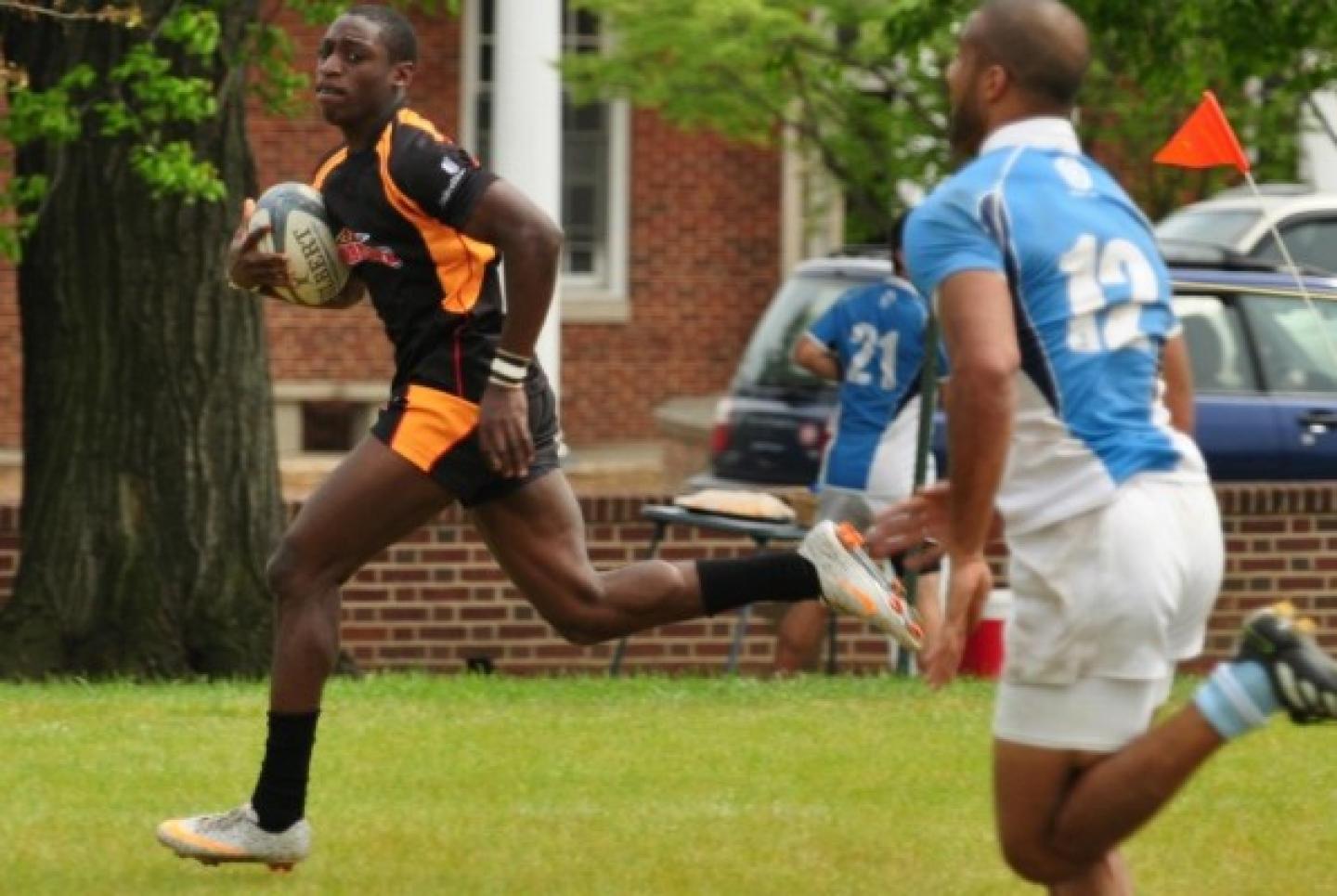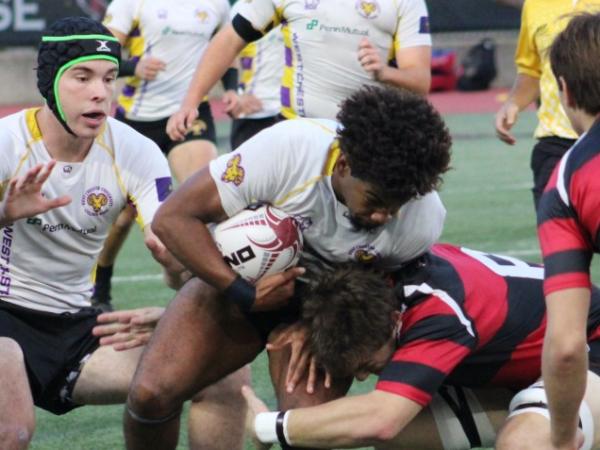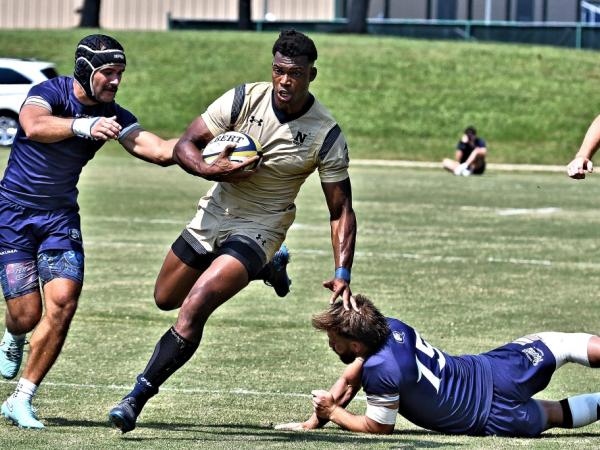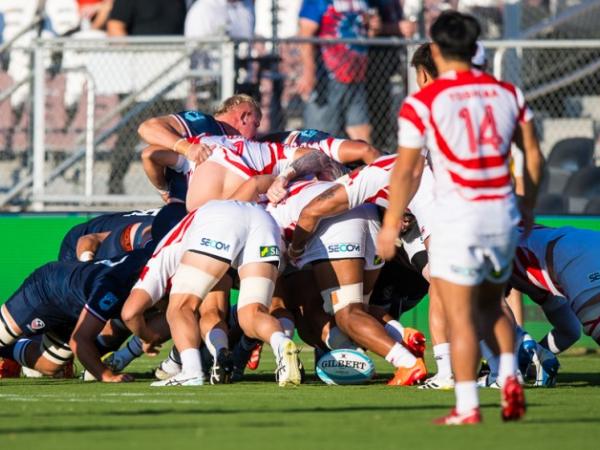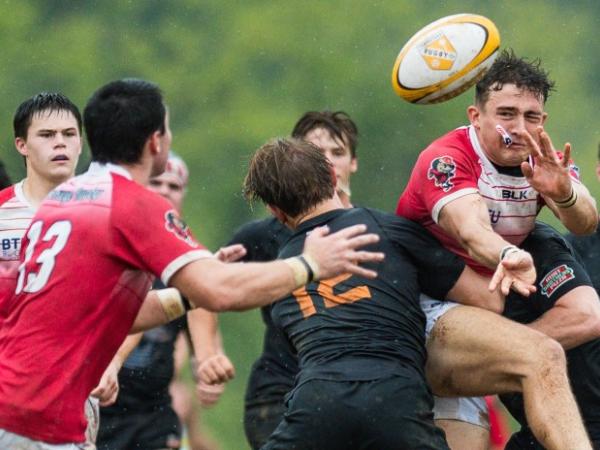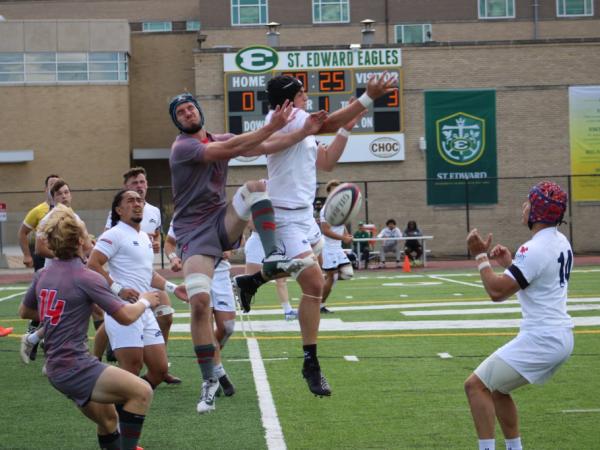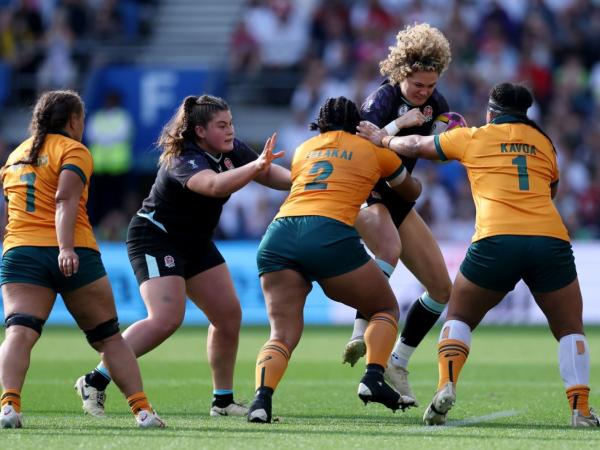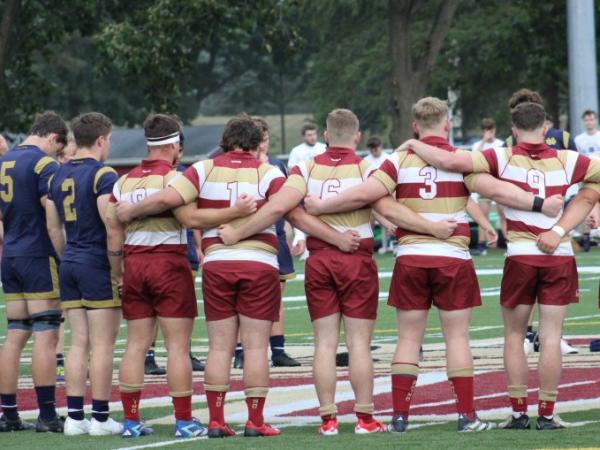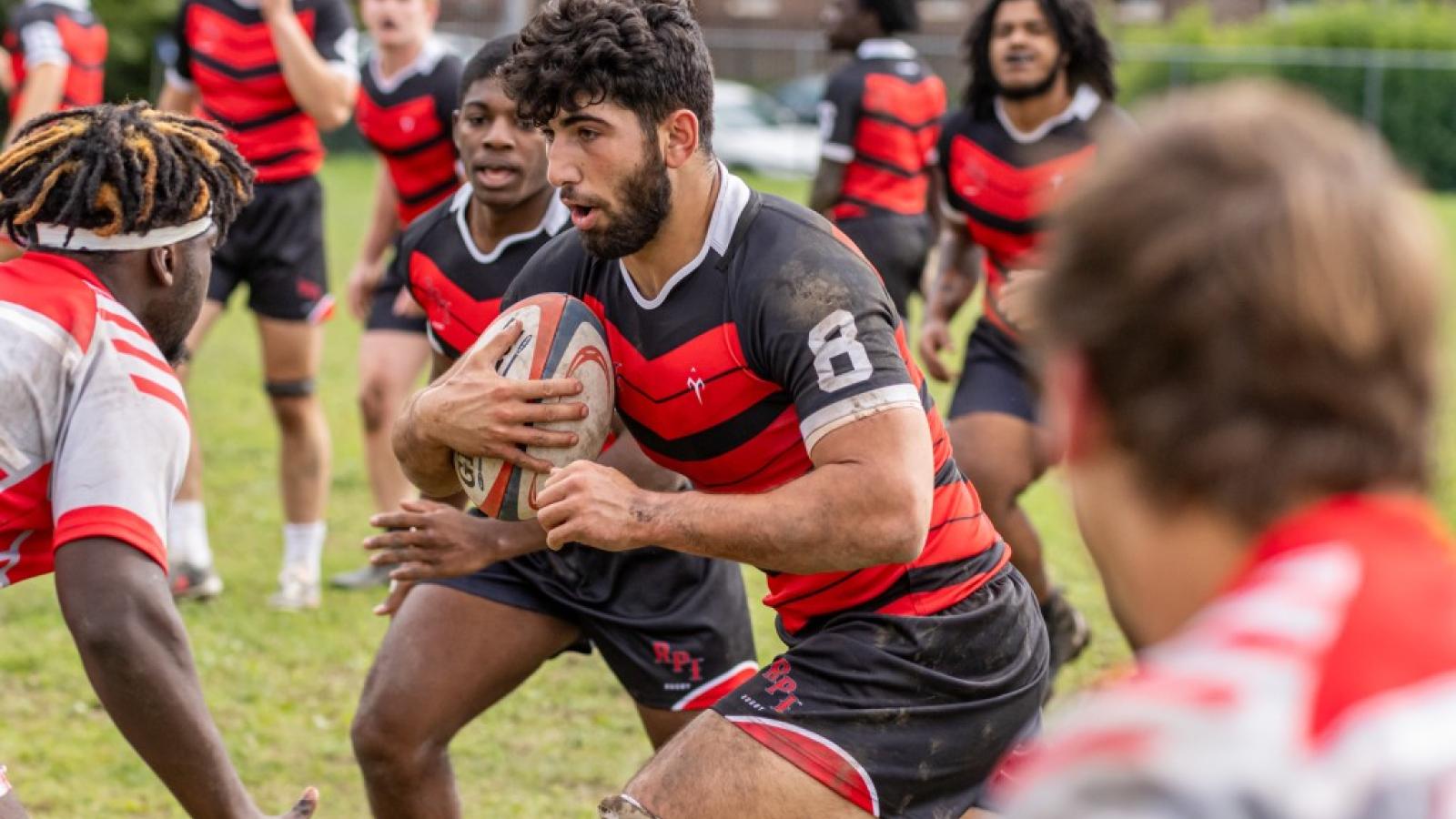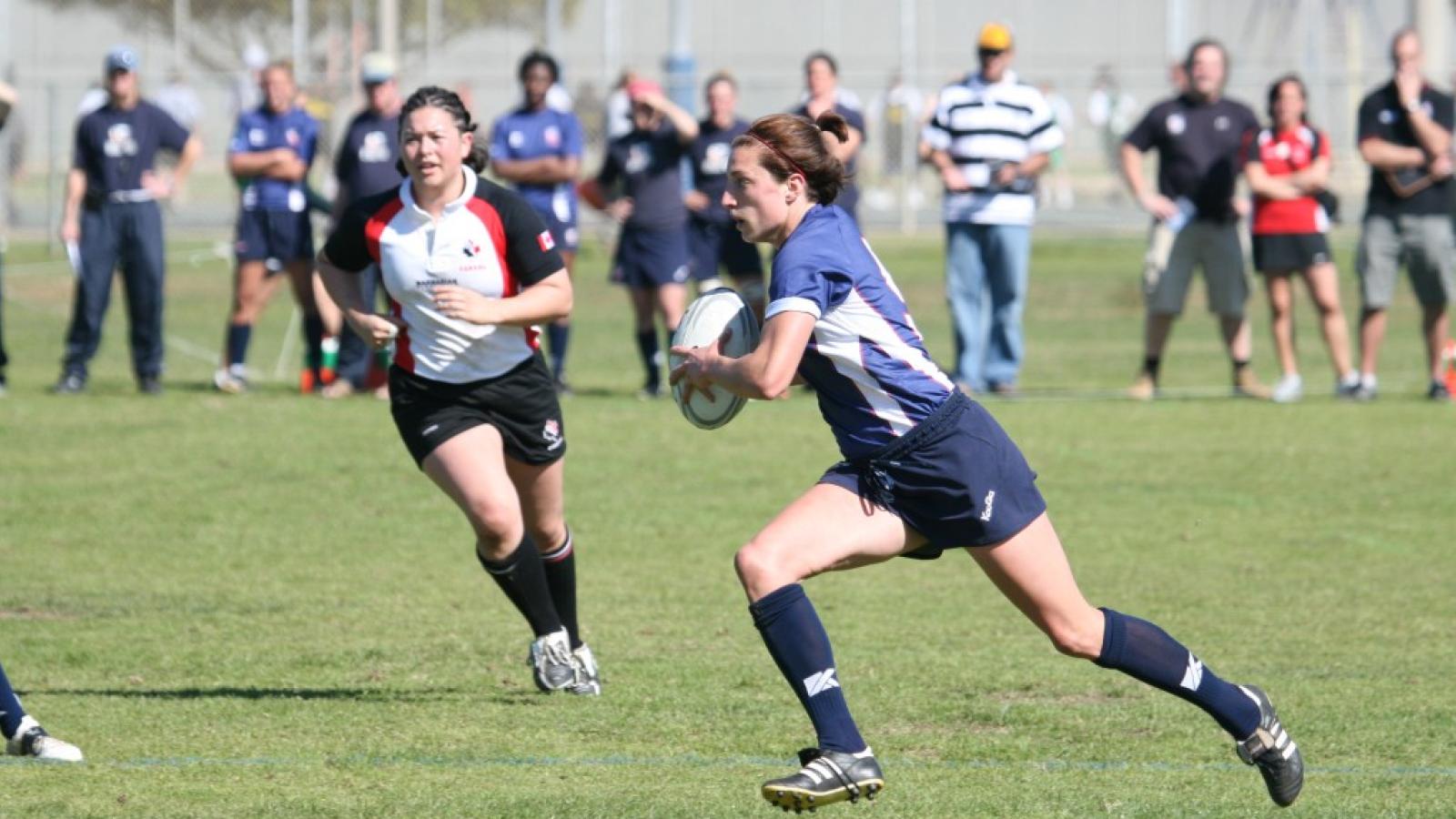The new Men’s USA 7s High Performance Camp is supposed to give players exposure to the new USA coaching staff, and it will; it might also put existing camp members on notice.
Many of the players invited were produced through college and high school programs, and it’s their youth, along with their athleticism, that the USA needs.
As sports fans throughout the sporting world try to take lessons from Germany’s FIFA World Cup victory, rugby can certainly learn something, namely, a group of players who grow up together and learn together and play for each other, can accomplish much in any game.
That is quite possibly what Mike Friday and Chris Brown will want to do with the USA team, and that movement will begin next week with this camp.
Here’s a look at some of the players, and their origins:
Perry Baker. Still considered young, Baker has actually been showing up at 7s club national tournaments since 2006 when he was a scrawny, and very fast, teenager. He has put on some muscle, and moved from Florida to Ohio to work with Tiger.
Tyler Barberi. Classic case of a talented and intriguing young player from a not-well-known college (Towson).
Ryan Cochran. Former Westerville and Ohio State player, Cochran then played with Tiger, starting at the lower levels and working his way up. Isn’t that how it’s supposed to work?
Tyler Coffman. Another one out of the young 7s players coming out of Central Washington. A former football player who has pace and power, he was most impressive during the Battle of the Bay 7s last fall, when he was still learning the game.
Logan Collins. Former USA U19 player and Colorado State University standout, Collins is now captain of the Denver Barbarians. He is a great example of a dedicated and well-respected player who got his first high-level look as a high-schooler.
John Cullen. A football player at Utah who had played a little rugby in high school and then finished up with one more season of rugby with the Utes, Cullen was not really considered a 7s player until he started working with the Seattle Saracens
Max de Achaval. A smooth, intelligent player who was an All American for Colorado, de Achaval is not an athlete in the sense of one who runs fast or jumps high. But he is elusive, makes smart decisions, and is a distributor. It’s unclear if that’s enough in international 7s, as you have to have some pace to play defense. But his field vision deserves to be looked at.
Tai Enosa. A former USA age-grade player, Enosa has already been capped at 7s and 15s, but it seems as if he never got a chance to really show what he is capable of. He is fast and has as good a sidestep as anyone, but defense has always been a question-mark. With a new coach coming on, he might be in position to make a new impression.
Paul Eteaki is a former hard-hitting linebacker at Midwestern State. He’s the sort of big, powerful athlete who should at least get a closer look. If we talk about searching for good athletes from other sports, we should look at them.
Chris Frazier was the leading player on the Northeastern University team, and especially at 7s. He plays No. 8 in 15s, and was the team captain. Here is a guy who’s athletic and a leader, who has taken on rugby as his game.
Mikey Garrity is perhaps the quintessential club player, and shows there’s room for that kind of guy to get a look.
Colin Hawley was co-captain at Cal and played both 7s and 15s for the USA before taking a break last season. Clearly he wants to get back into things, but his absence raises the question about whether being in residence with the USA team is right for everyone. Hawley has experience, height, pace, and understands what international 7s players face Most don’t.
Marcus Henderson. Henderson is another crossover who was introduced to rugby in college, in his case, Stanford. The key for him was that he was picked up by the Northeast Olympic Development Academy after he graduated.
Tom Hickey. Big and strong, the 6-5 Hickey comes from Notre Dame, which has struggled to bust through tough competition in recent years. Still, at least they pitch up, and the lessons have helped Hickey grow as a player.
David Hightower. Another crossover, this time a runner, developed through club (Connecticut Bulldogs) and ODA Rugby.
Matt Hughston. East Carolina University and then on to Charlotte RFC. The key event for him was the Elite City 7s. He doesn’t go there, it’s unclear if he’s seen at all. Still raw.
Richard Kirkland. Another crossover, who, like Hightower, played with the Bulldogs. Kirkland was an All-ECAC football player at Southern Connecticut and has all kinds of speed.
Derek Lipscomb. Another former football player who crossed over in club rugby. Lipscomb is a power runner.
Chris Mattina. Former Xavier and Delaware halfback, he is smart, aggressive, and knowledgeable. He has a bit of a rugby chip on his shoulder as his senior year was taken from him when Delaware’s rugby team was suspended. It seems to have only fueled his desire to play at a higher level.
Rocco Mauer. Mauer still holds the record for most tries in one CRC tournament when he scored 11 for Bowling Green in 2010. He is very quick, can kick on the run, and works hard on defense. He was possibly rushed to the Eagles in 2012 and as a result seemed to lose confidence, which, in his case, seems to manifest itself in him floating, rather than streaking, to a gap. Now with the Seattle Saracens, he is in a perfect position to build on his ability.
Dominic Mauer. Rocco’s brother and fellow Bowling Green alum is bigger, and a more powerful athlete than Rocco, but not as quick. He has been working with Tiger Rugby in Ohio and developing into what the USA desperately needs - a multi-skilled forward with pace who can play defense.
Don Pati. One of the stars of the University of Utah team and a former Highland HS player, Pati kind of drifted away when the Utes were put under suspension in the spring of 2013. But he hooked on with Tiger in Southern California, and that’s good news. He is a solid block of a player who can suit up at scrumhalf or flyhalf. His combination of power and agility is almost unique.
Sean Rafferty. From Stony Brook University, Rafferty is the classic 7s switchover who played center in 15s but is likely a prop in 7s. He hooked on with the Northeast ODA and that’s why he’s here.
Ben Roach. A shifty, multi-skilled player at American International College. Solidly built, he’s not tall, but he knows his way around the game, and has played professionally in Europe.
Adam Sandstrom. Tall, rangy fullback at Arizona State and a former age-grade Eagle. Sandstrom is kind of in the mold of Hawley.
Trevor Tanifum. Raced onto the scene at the CRC in 2012 as he led the tournament in tries. He is deceptively fast, which means his legs don’t seem to move that much but he covers ground quickly nonetheless.
Pila Taufa. Hawaiian-based speedster with a slight reputation for being unpredictable (on the field, that’s good, off the field, that’s not).
Jack Tracy. Former USA age-grader who played with Belmont Shore before moving to Life University. A guy who overcame many personal problems to vault himself back to the upper echelon of the game.
Kevon Williams. Another crossover, Williams was a wide receiver for New Mexico Highlands before connecting with the Vatos rugby club and shredding defenses. He is raw - very raw - but talented.
There are some key messages from this list:
1. Crossovers from other sports usually make the switch in college, and when they do they do it more successfully.
2. Crossovers at the club level are finding a bit more success because a) there’s 7s throughout the year, and 7s is easier for crossovers to pick up, and b) the development and growth of the Olympic Development Academies, flawed though they may be, has given these players somewhere to go.
3. We are starting to see former age-grade Eagles trickle in, and we will see more as the dividends of the HS All American 7s team pay.
4. The guy choosing this list, Alex Magleby, wants a mix of raw athletes who show some rugby promise, club guys who at least deserve some sort of look, guys who fell away in the last year, and guys we figured would be there eventually.
5. College is still the top nursery for these players, with 20 having played rugby in college. Next is high school/age-grade rugby, which produced 13. But the pathways remain varied.






